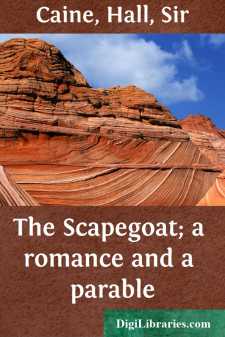Categories
- Antiques & Collectibles 13
- Architecture 36
- Art 48
- Bibles 22
- Biography & Autobiography 813
- Body, Mind & Spirit 142
- Business & Economics 28
- Children's Books 17
- Children's Fiction 14
- Computers 4
- Cooking 94
- Crafts & Hobbies 4
- Drama 346
- Education 46
- Family & Relationships 57
- Fiction 11829
- Games 19
- Gardening 17
- Health & Fitness 34
- History 1377
- House & Home 1
- Humor 147
- Juvenile Fiction 1873
- Juvenile Nonfiction 202
- Language Arts & Disciplines 88
- Law 16
- Literary Collections 686
- Literary Criticism 179
- Mathematics 13
- Medical 41
- Music 40
- Nature 179
- Non-Classifiable 1768
- Performing Arts 7
- Periodicals 1453
- Philosophy 64
- Photography 2
- Poetry 896
- Political Science 203
- Psychology 42
- Reference 154
- Religion 513
- Science 126
- Self-Help 84
- Social Science 81
- Sports & Recreation 34
- Study Aids 3
- Technology & Engineering 59
- Transportation 23
- Travel 463
- True Crime 29
Lippincott's Magazine, Vol. 22, September, 1878
by: Various
Description:
Excerpt
CONSTANTINE.One of the most interesting and amusing episodes in our many Mediterranean and North African wanderings was a visit to the Sahara. Although we penetrated but a short distance into the Great Desert, we were there introduced to aspects of Nature and to phases of life wholly new and strange to us.
We had been spending the winter in Algiers, and were unwilling to return to Europe without seeing something more of the African continent. When, therefore, the sunny winter gave place to still more sunny spring, we set out upon our travels—first, eastward by sea to Philippeville, and then southward to the desert.
The French colony of Algeria, as every one knows, stretches along the African coast from Morocco to Tunis, and from the Mediterranean southward to the desert. It is divided into three provinces—Oran, Algiers and Constantine, the central one being the most important and that from which the whole country takes its name. From either of these provinces it is possible to penetrate inland to the Sahara, but this is done most easily from the eastern settlement, Constantine. We therefore made choice of this route, and on a bright morning early in April started from Algiers for Philippeville. The voyage along the coast affords some glimpses of fine scenery. The Bay of Bougie especially, surrounded as it is by lofty mountains, part of the Atlas range, is extremely picturesque. As the steamers, however, only remain a few hours at each of the stopping-places, there is scarcely time fully to enjoy the varied and charming views. It seemed to us as if a vast diorama had passed before us, leaving on the mind not an indelible picture, but a mere shadowy outline of headlands and bays, rocky promontories and sunny sloping shores. With the exception of the port of Algiers, there is, properly speaking, no harbor on this part of the African coast: there are only open roadsteads, where, exposed to the full roll of the sea, vessels ride uncomfortably at anchor. The journey is in consequence rather trying: nevertheless, we had not long reached terra firma before we acknowledged ourselves amply compensated for the fatigues and little unpleasant accompaniments of the sea-voyage.
Philippeville offers to the traveller no great attractions. Its situation is pretty, and it possesses some Roman remains, the examination of which may occupy pleasantly and profitably enough the unavoidable interval between the landing and the start for the South. After resting but one night, we set out for Constantine, the capital of the province of that name. There is nothing whatever of interest between the sea and the city—nothing till you arrive within sight of Constantine itself. Then, indeed, when from the plain below you get your first view of the town, perched like an eagle's nest upon its rocky height, you can at once realize the appropriateness of its singular name—"the City in the Air." It is so high above you it seems midway between earth and heaven. Its situation is indeed unique and most strangely picturesque....






















